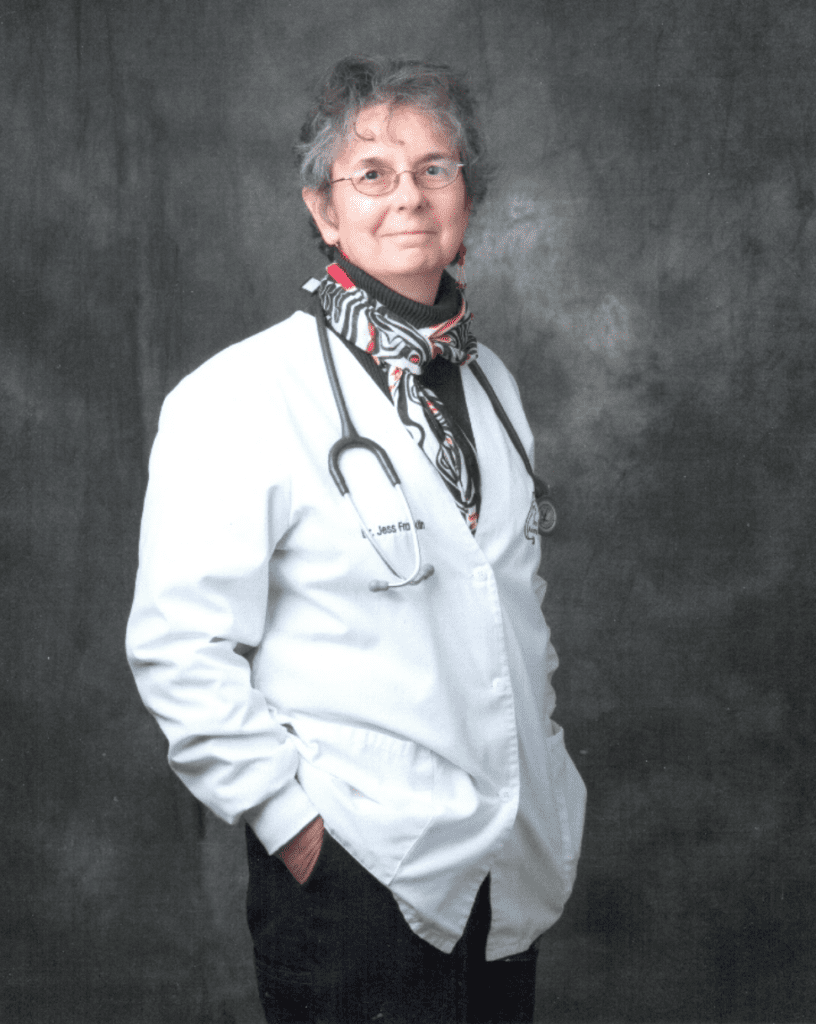
Reflections from 37 years at Ann Arbor Animal Hospital
by Dr Jess Franklin
I started at Ann Arbor Animal Hospital when my oldest daughter was entering kindergarten at Saline Union School. As I enter retirement at the end of 2024, my 3 daughters have finished college, and gotten married. I have attended multiple graduations at the Big House. I have 5 grandchildren.
Growing up on Long Island, New York, I remember an outdoor cat named “Boots” who moved her litter of kittens inside by jumping through a round hole of a missing part of a leaded glass window surround next to our front door. She would jump up to the 5-inch opening, about 2 feet off the floor, perch on the window frame for a few seconds, and then jump down with the kitten carried in her mouth. One of her kitten nests was between the shoes in a small hall closet.
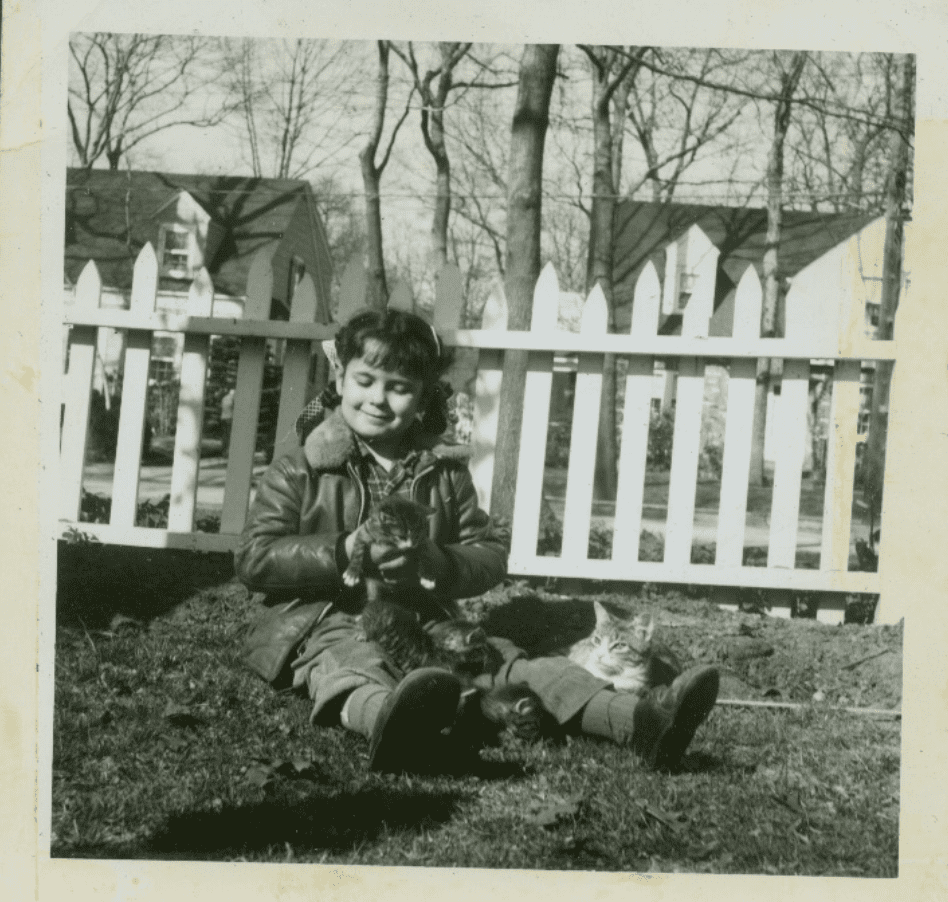
A young Jess Franklin at home with her cat and kittens
Now in 2024, I wonder about how a cat could be enough of a pet to be named but not be spayed. The modern me supports “The Indoor Cat Initiative”, and wants all cats to be indoors and neutered, and not a threat to songbirds.
My first dog, a collie named Boxer, came into my life as I taught riding at a summer camp in the Berkshires between my sophomore and junior years of high school in 1969. My first dog training experience was with Boxer. In that class we used a metal slip training collar, no food rewards, and when he disrupted the class by barking at other dogs, I was instructed to bop him on the head with an empty 2-liter pop bottle.
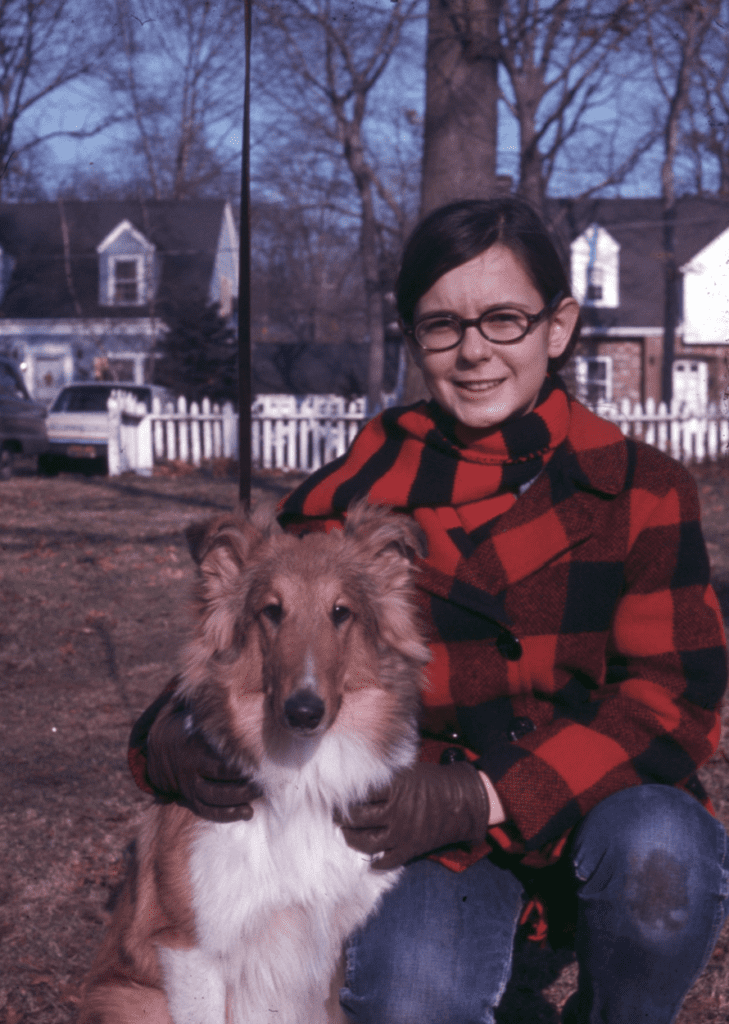
Jess Franklin with her first dog, a Collie named Boxer
For many years now, moulding behavior with food rewards has been the mainstay of training for young dogs learning basic household obedience with novice trainers. My young dog’s barking was a sign of anxiety, not disobedience.
For some situations, food can be a bridge for training with anxiety. In exam room conversations with dog owners, my advice now is to say if a dog is too nervous to take a treat, he is probably too stressed to be learning or have a positive experience.

Jess’ youngest daughter Deb with Belgian Tervuren, Maddie, in 2004 puppy class

Maddie at age 15 in 2019.
I attended Cornell University school of Agriculture and then the Cornell Veterinary College, graduating in 1978.
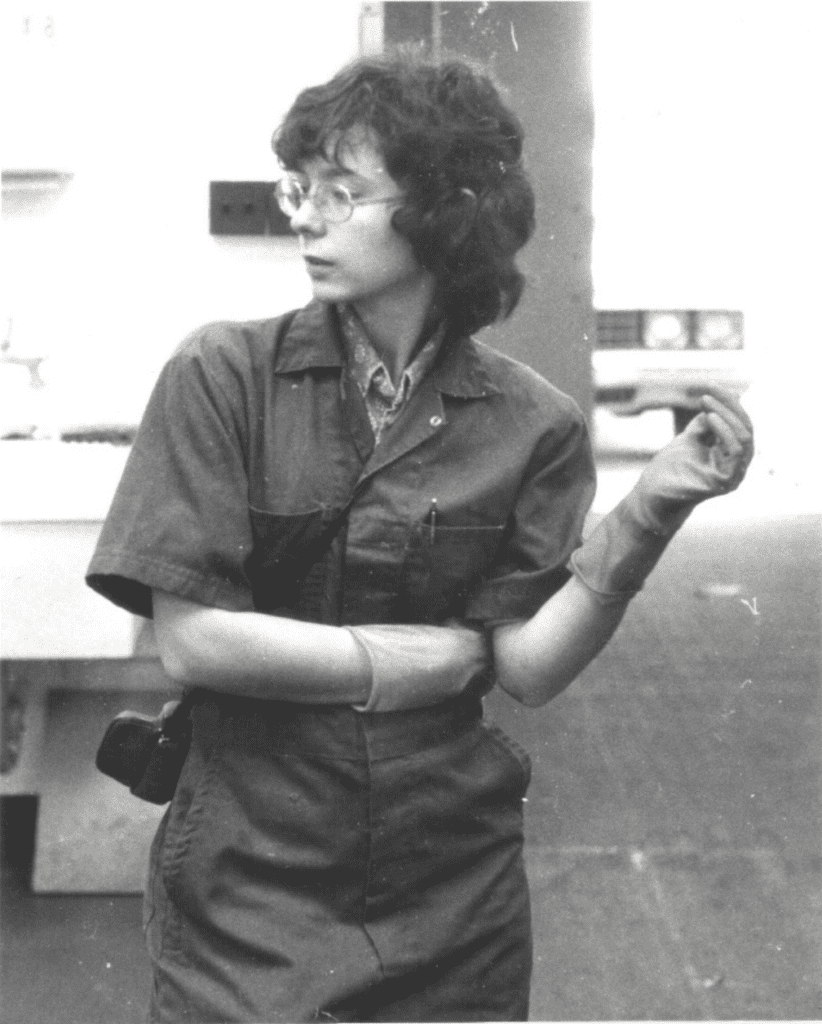
A photo from applied anatomy class in 1976
After Cornell, I spent 1 year in a large animal internship at Michigan State University, and then 7 years in mixed practice in Dundee, Michigan, before joining Ann Arbor Animal Hospital.
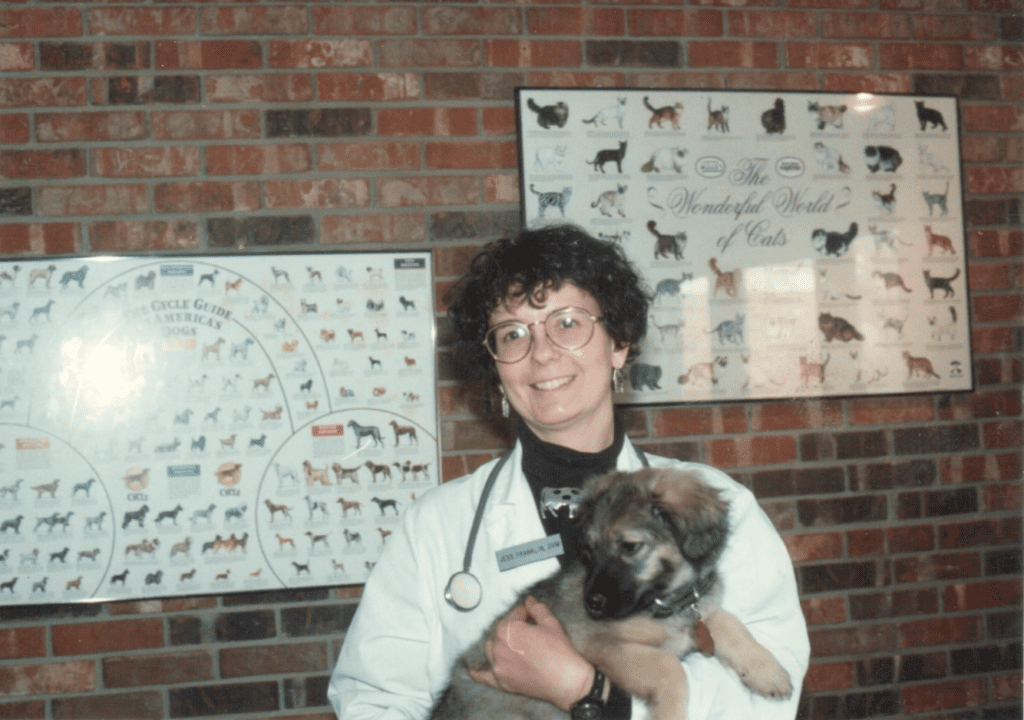
Dr. Franklin with Pepper in the waiting room of the old AAAH building, 1992
I studied Veterinary Acupuncture with AAVA in 1997. This was also the year that our first really effective pain medication was approved for dogs. Before that, we had phenylbutazone and aspirin. We now have several oral medication options of non-steroidal products and new injectable arthritis pain medications. Pain management has come a long way.
In my hands, acupuncture was most useful for animals that cannot tolerate oral medication, and also for complicated cases, where frequent visits allowed better control of the meds given as well as the acupuncture. It seems particularly effective for neck pain.
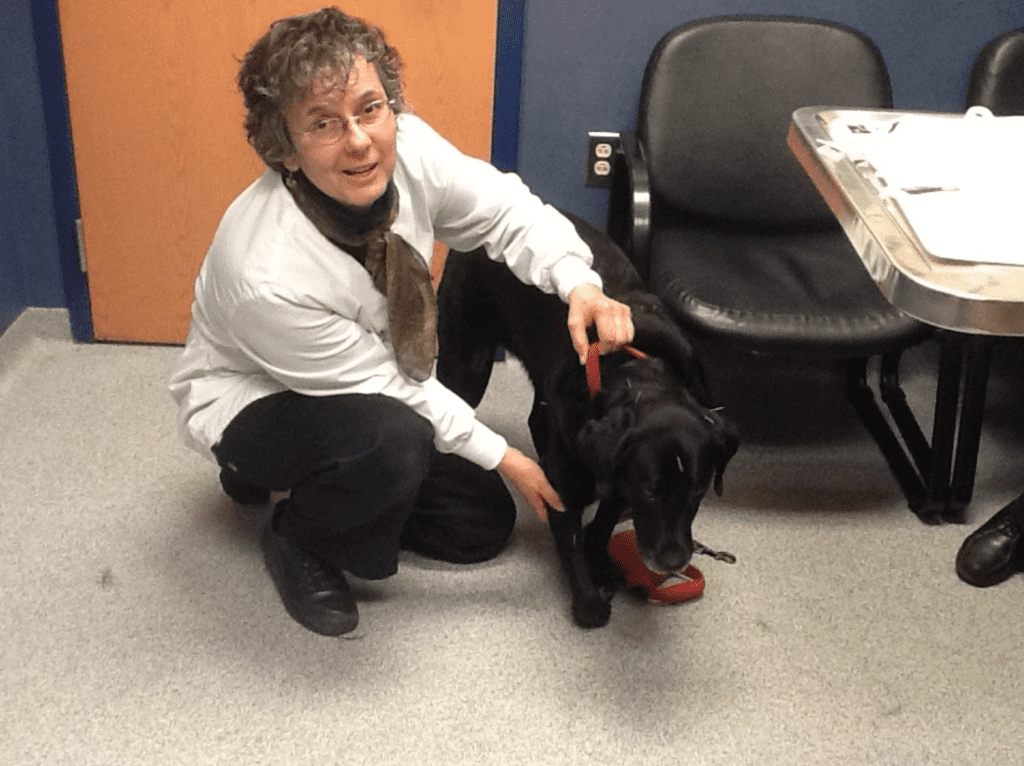
Dr. Franklin with an acupuncture patient
We have used basic level ultrasound at Ann Arbor Animal Hospital for many years. It helps us see masses and fluid accumulations and allows low-risk urine collection.
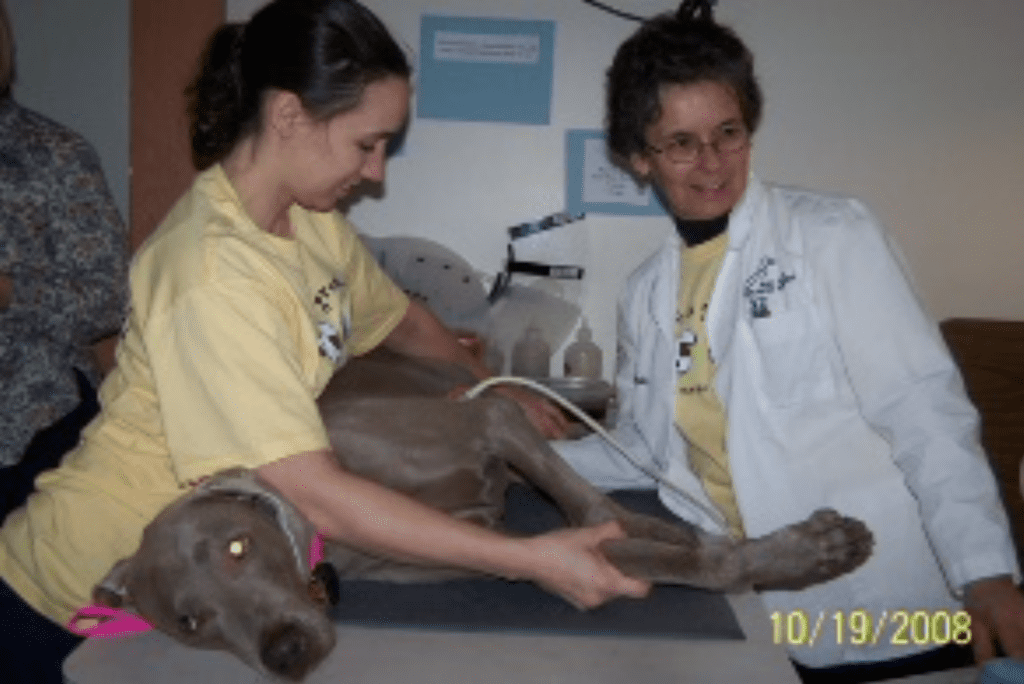
Using ultrasound on a patient
For the next chapter of my life I will be birding, visiting Alaska, and spending time with grandchildren.
I want to thank all the families who shared their animal children with me at Ann Arbor Animal Hospital. I will remember you when I see you at the grocery store. (Perhaps I will recall your dog with the odd mass on his neck, and not your name, but I remember you.)
Thanks again,
Jess

Recent Posts
About Us
Ann Arbor Animal Hospital is a locally-owned animal hospital operating for over 90 years in Ann Arbor, MI.
